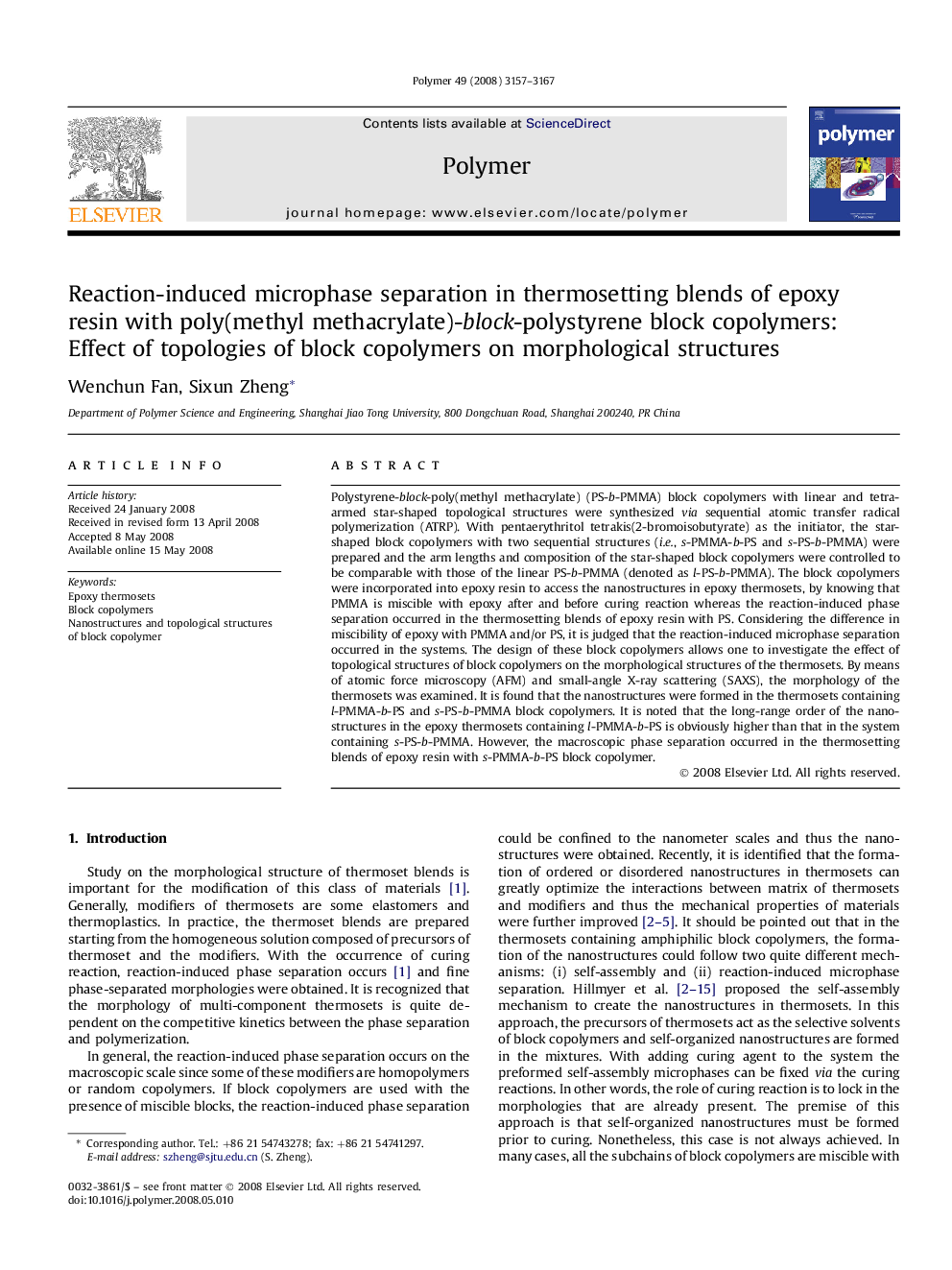| Article ID | Journal | Published Year | Pages | File Type |
|---|---|---|---|---|
| 5186752 | Polymer | 2008 | 11 Pages |
Polystyrene-block-poly(methyl methacrylate) (PS-b-PMMA) block copolymers with linear and tetra-armed star-shaped topological structures were synthesized via sequential atomic transfer radical polymerization (ATRP). With pentaerythritol tetrakis(2-bromoisobutyrate) as the initiator, the star-shaped block copolymers with two sequential structures (i.e., s-PMMA-b-PS and s-PS-b-PMMA) were prepared and the arm lengths and composition of the star-shaped block copolymers were controlled to be comparable with those of the linear PS-b-PMMA (denoted as l-PS-b-PMMA). The block copolymers were incorporated into epoxy resin to access the nanostructures in epoxy thermosets, by knowing that PMMA is miscible with epoxy after and before curing reaction whereas the reaction-induced phase separation occurred in the thermosetting blends of epoxy resin with PS. Considering the difference in miscibility of epoxy with PMMA and/or PS, it is judged that the reaction-induced microphase separation occurred in the systems. The design of these block copolymers allows one to investigate the effect of topological structures of block copolymers on the morphological structures of the thermosets. By means of atomic force microscopy (AFM) and small-angle X-ray scattering (SAXS), the morphology of the thermosets was examined. It is found that the nanostructures were formed in the thermosets containing l-PMMA-b-PS and s-PS-b-PMMA block copolymers. It is noted that the long-range order of the nanostructures in the epoxy thermosets containing l-PMMA-b-PS is obviously higher than that in the system containing s-PS-b-PMMA. However, the macroscopic phase separation occurred in the thermosetting blends of epoxy resin with s-PMMA-b-PS block copolymer.
Graphical abstractDownload full-size image
